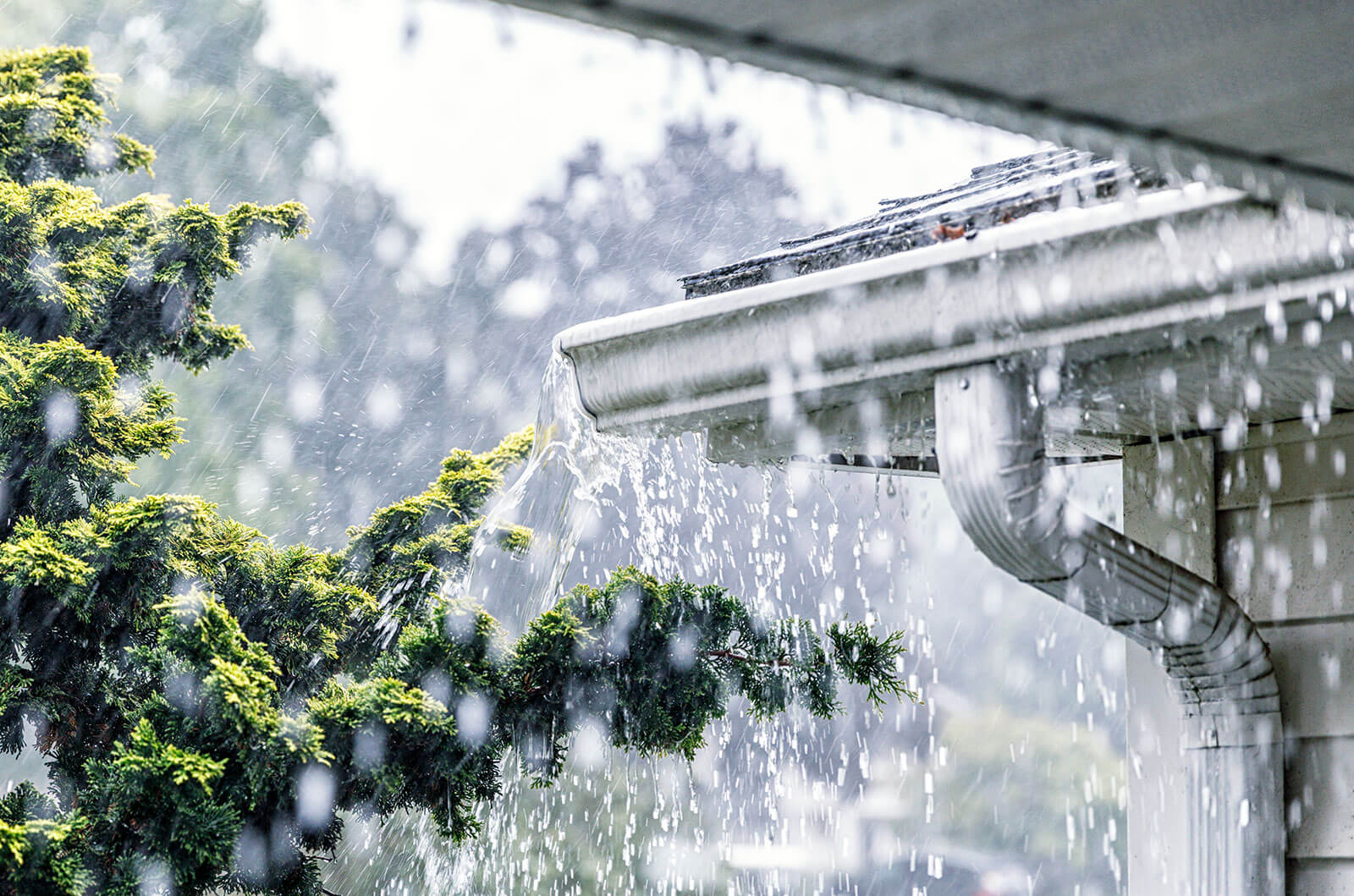
Your roof: Protecting your home from storm damage
July 21, 2022 — Homeowner insights
Your roof is your home’s No. 1 protection against the elements. When wind, rain, hail and snow are in the forecast, you can cozy up at home without having to worry about staying warm and dry, thanks to the roof over your head. With severe weather, like hurricanes, you may not be waiting the storm out at home, but your roof is still your home’s best protection.
Everything from the architectural style of your roof to the roof covering you select has a significant impact on ensuring your home is storm ready. Hardy homes, prepared for Mother Nature’s worst, perform better and experience less damage — and subsequently often have fewer insurance claims.
Whether you’re in the market for a new roof or looking to construct a resilient home, here’s everything you need to know about roof selection and maintenance so you can protect your home from the top down.
Roof structure and style
Homes are constructed with a variety of roof styles. Roof style is often selected based on the architectural design and curb appeal of the home — not on storm resistance factors. There are flat and mono-slope roofs, hip and gable roofs, and turret and gambrel styles.
“If the structure is designed properly and the engineering is correct with all components installed specific to the design, most structures will be fine,” said Daniel Smith, senior innovation manager at SageSure. Smith holds a Ph.D. in structural engineering. “Construction errors and installation mistakes tend to exacerbate the difference between roof styles when it comes to storms.”
Roof shapes that direct wind flow without sharp edges perform best in high-wind events. When wind hits a building, it must find its way around. Roofs with an aerodynamic design and fewer obstructions direct wind flow easily around the structure, eliminating pressure suction zones. For this reason, hip roofs tend to perform the best with fewer instances of damage and loss during high-wind events.
Flat roofs and mono-slope roofs are not ideal in high-wind zones. Mono-slope roofs, however, do perform better when it comes to water and preventing water accumulation.
Elaborate roofs or those with a combination of different styles or several dormers are thought to disrupt and break up the wind flow and prevent the creation of suction pockets. However, elaborate roofs are more expensive to repair and can increase your Coverage A replacement costs. The intricacies in design for this type of roof also leave more room for error in installation and thus underperformance if not constructed properly.
Roof covering
No matter what type of roof style a home has, a variety of roof coverings can be applied to further protect the home from the elements. For the strongest protection, whether you’re considering traditional shingles or alternatives like Spanish tile, select roof coverings that are wind and impact rated. Before any covering is applied to the structure, it’s important that your roofing contractor seal your roof deck. A properly installed sealed roof deck can reduce water entry by 95%.1
In terms of wind resistance, architectural shingles perform best. Architectural shingles and 3-tab shingles are made from an asphalt base, with architectural shingles being coated with an additional layer of asphalt, making them more robust.
Wood shingles, made from cedar or pressure-treated pine, are more susceptible to mold because of their organic nature (and more flammable, a concern in wildfire-prone states). Concrete and slate tiles experience more damage from wind-borne debris. Fallen tree limbs are more likely to cause tiles to break and require replacement.
Roof maintenance
No matter what type of roof structure or roof covering your home has, your roof requires maintenance and upkeep. Age, wear and damage can all compromise your roof’s integrity, but these weaknesses aren’t always easy to identify by an untrained eye or from the ground.
Architectural and 3-tab shingles are susceptible to unsealing due to aging. The sealant strip adheres to the shingle below in an overlapping stack. Sections of shingles can become unsealed when the sealant strip wears out due to age. When the shingles don’t properly adhere to one another, wind can catch the shingles, lifting them and increasing the wind load on the roof.
Over time, sealant strips may become worn out and need replacement but knowing if they need replacement can be difficult to ascertain when viewing from the ground.
Similarly, other types of roof coverings may be susceptible to aging, normal wear and tear, or damage from minor events.
Having periodic roof inspections is the best way to diagnose areas that need to be addressed. “From an engineering perspective, we design houses to last 50 years. You can get more out of it, but it requires maintenance,” Smith said. “If you don’t do anything, it might not get 50 years, but if you want it to last longer, you have to do the maintenance. The roof is no exception.”
Roofs are easy to forget about until they fail to do their job. Each day, they perform their function without much of a thought from you unless something is wrong. Knowing how the style, covering and maintenance needs affect performance can help you select the right options for your climate and weather patterns. The right roof protects your home and can decrease claims — and that keeps your insurance premiums down.
Read SageSure’s Roofing Guide here
Read more about roof coverings here
Read more about roof styles here
Read more about questions you should ask before hiring a roofer here
1.https://disastersafety.org/dryattic/
